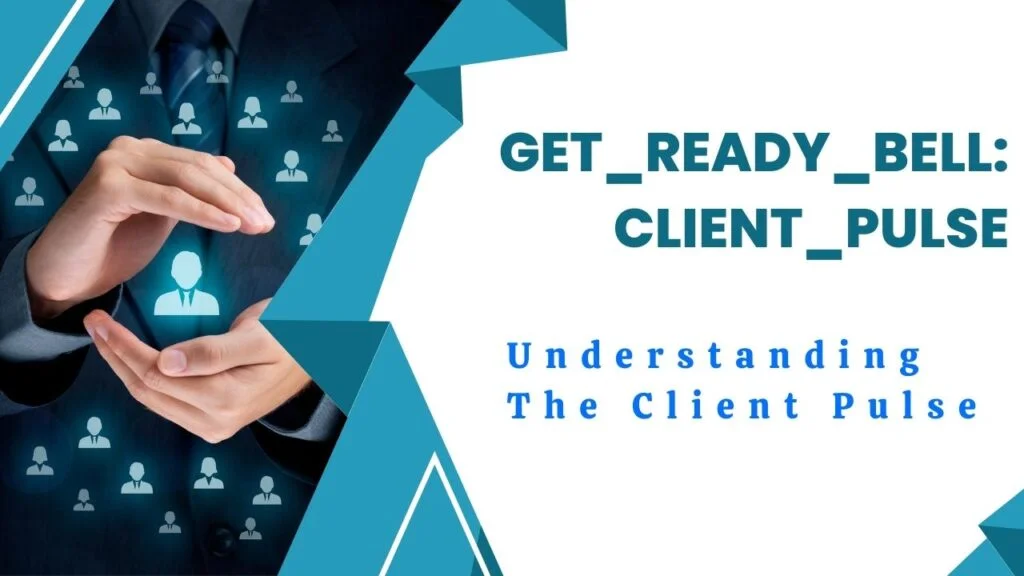
Understanding Client Pulse
The concept of ‘Client Pulse’ represents a strategic methodology that allows businesses to gauge customer sentiment and engagement levels effectively. Recognizing and measuring this pulse is essential for organizations that aim to enhance their customer engagement strategies. At its core, the Client Pulse framework consists of several key components, including feedback loops, client interactions, and comprehensive monitoring tools.
Feedback loops serve as a critical element of the Client Pulse system. They allow companies to continuously collect, assess, and act on customer feedback. This process not only provides insights into what clients think about a company’s products or services but also empowers businesses to make informed decisions based on real-time data. By incorporating regular feedback, organizations can adapt their customer engagement tactics to better meet evolving expectations and enhance their service delivery.
Client interactions encompass all touchpoints between a business and its customers. These interactions can occur through various channels, such as social media, customer service calls, or website engagements. Monitoring these interactions helps businesses to understand not just the transactional aspects of customer relationships, but also the emotional connections that contribute to customer loyalty. Evaluating the nature and outcome of these interactions is vital for grasping the overall sentiment associated with the Client Pulse.
Moreover, employing advanced monitoring tools plays a significant role in measuring the effectiveness of customer engagement strategies. Technologies such as customer relationship management (CRM) systems and analytics platforms enable businesses to track client behaviors, preferences, and satisfaction levels over time. This data is instrumental in identifying trends, developing personalized marketing strategies, and ultimately ensuring that the organization aligns closely with its customers’ needs.
Understanding the current pulse of clients is therefore indispensable for aligning business goals with customer expectations. By continuously assessing the Client Pulse, organizations can create enhanced customer experiences that foster loyalty and drive long-term success.
Benefits of Implementing Get Ready Bell: Client Pulse
Adopting the get_ready_bell:client_pulse system presents numerous advantages for businesses aiming to enhance their customer engagement strategies. One of the most significant benefits is the potential for improved customer satisfaction. By utilizing Client Pulse, businesses can gather real-time feedback from customers, allowing them to understand preferences and pain points promptly. This immediate insight enables organizations to adapt offerings and improve service delivery, directly contributing to a more positive customer experience.
Moreover, the implementation of a Client Pulse approach can significantly boost customer retention rates. Research indicates that existing customers are more likely to remain loyal to brands that actively solicit their feedback and respond to their needs. For example, a retail chain that adopted Get Ready Bell: Client Pulse noticed a 20% increase in repeat purchases after making adjustments based on customer insights gathered through the system. Such marks of success highlight the power of listening to customers and tailoring services accordingly.
In addition to customer satisfaction and retention, businesses adopting this system have also reported increased sales figures. When companies leverage analytics derived from Client Pulse data, they can make informed decisions about product offerings, marketing strategies, and overall customer service improvements. A fast-food chain, after analyzing Client Pulse feedback, revamped its menu items to include healthy alternatives, resulting in a 30% uplift in sales. Such data-driven approaches underscore how organizations can use technology and analytics to inform strategic decisions that resonate with customer desires.
In conclusion, implementing the Get Ready Bell: Client Pulse system not only facilitates improved customer satisfaction and retention but also drives sales growth. As demonstrated by various real-world examples, the integration of technology and customer feedback analytics can transform how businesses engage with their clientele, fostering lasting relationships that benefit both parties.

Steps to Get Started with Get Ready Bell: Client Pulse
Launching a successful ‘Get Ready Bell: Client Pulse’ initiative requires a systematic approach to enhance customer engagement. The first step is to assess the current level of client engagement within your organization. Start by gathering insights on how customers interact with your services or products. This can be done through surveys, feedback forms, or direct interviews. Understanding where clients stand relative to their expectations and experiences will provide a clear foundation for your Client Pulse strategy.
Once the initial assessment is complete, the next step is to implement tools for collecting feedback. Identify suitable platforms that will allow you to capture client sentiments effectively. This could include online feedback tools, social media channels, or specialized customer relationship management software. Ensure that these tools are user-friendly to encourage more customers to share their experiences. The aim here is to create an open channel of communication where customers feel valued and heard.
The analysis phase is pivotal in the Client Pulse process. With the feedback collected, it is essential to analyze the data to identify trends, concerns, and areas needing improvement. Leverage analytics tools to quantify the feedback and transform qualitative data into actionable insights. This will not only help in understanding client needs but also in tailoring your offerings to suit their preferences better.
Collaboration among different teams—such as marketing, sales, and customer support—is crucial for a successful implementation of the Client Pulse initiative. Each team brings a unique perspective and expertise that can contribute to a holistic understanding of client behaviors and preferences. Regular updates and meetings can ensure that everyone is aligned with the overarching goal of enhancing customer engagement. By fostering a culture of collaboration and continuous feedback, organizations can leverage the Customer Pulse strategy to build stronger relationships with their clients.
Best Practices for Maintaining Client Pulse
Maintaining an effective ‘Get Ready Bell: Client Pulse‘ demands a proactive approach to continuous engagement with clients. One essential practice is the frequent collection of feedback, which should be structured and purposeful. Surveys, polls, and direct communication channels can be utilized to gather insights on client experiences and expectations. By actively soliciting feedback, businesses can stay attuned to their clients’ needs, allowing for timely adjustments to services or products.
In addition to regular feedback collection, businesses must exhibit responsiveness to the insights gathered through Client Pulse initiatives. This responsiveness involves not just acknowledging client input but also demonstrating how that feedback is being utilized to drive changes. Communicating these adaptations to both clients and internal stakeholders fosters a culture of transparency and trust, strengthening customer relationships and enhancing employee motivation.
Adapting business strategies based on Client Pulse findings is vital for ensuring relevance in an increasingly competitive landscape. This could involve reshaping marketing approaches, tailoring service offers, or innovating new product features. Regularly evaluating the implementation of the Client Pulse strategy will identify areas for improvement and development over time. Stakeholders should conduct a thorough analysis to measure the effectiveness of engagement tactics and assess the overall health of client relationships.
Furthermore, it is imperative to establish a routine for assessing the changes enacted from Client Pulse insights. This may involve setting performance indicators that reflect engagement levels, customer satisfaction, and retention rates. An iterative process will allow businesses to refine their approach and continually enhance the client experience. By committing to best practices in maintaining the Client Pulse, organizations can foster stronger client connections and drive sustained business growth.





